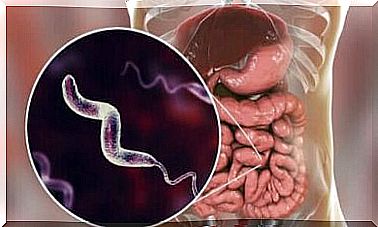What Is Drug-induced Photosensitivity?

Drug-induced photosensitivity is quite common; in fact, an estimated 3,000 drugs can cause this side effect. It can manifest as either a phototoxic reaction or a photoallergic reaction.
Thus, all phototoxic or photoallergic reactions are photosensitivity reactions, but not all photosensitivity reactions are either phototoxic or photoallergic. All of these are adverse reactions that occur on the skin after exposure to the sun and taking certain medications.
Especially in summer time, it is important to beware of photosensitivity reactions. For this reason, both health professionals and patients should be aware of photosensitizers.
What is the photosensitivity of drugs?
Thus , drug-induced photosensitivity is a skin reaction that occurs when the sun’s rays hit the skin and react with the chemical compounds in the drug.
These compounds, which react with visible light and ultraviolet radiation in the light spectrum of the sun, can be both active ingredients of the drug and some of its excipients.
It is worth mentioning that photosensitivity reactions account for up to 8% of all adverse drug reactions, and risk factors include skin pigmentation. In fact, the more pigment there is in the skin, the more likely these reactions are to occur.
In addition to pigmentation, other population groups are also susceptible to photosensitivity reactions:
- Patients with chronic pain treated with NSAIDs.
- Cancer patients being treated with chemotherapy.
- People with mental illness who are treated with phenothiazines suffer from mental illness.
- Patients with hypertension treated with thiazide diuretics.
- Elderly and patients with a weakened immune system.

What is a phototoxic reaction?
As already mentioned, a phototoxic reaction is a type of drug-induced photosensitivity reaction. Unlike the photoallergic reaction discussed below, the immune system is not involved in the phototoxic reaction.
Phototoxic reactions account for 95% of all drug-induced photosensitivity reactions. They may develop within a few minutes or hours of taking the medicine and their main symptoms are as follows:
- Erythema and edema
- Itchy blisters
- Symptoms resembling bad sunburn
These reactions are more typical of oral drugs and arise because they form free radicals that react with oxygen to produce highly reactive and cell-damaging chemicals.
What is a photoallergic reaction?
This is a different kind of photosensitivity reaction. As mentioned above, such a reaction involves the immune system. The onset of a photoallergic reaction requires that the UV rays cause a chemical change in the medicine taken.
The drug is converted into another chemical called hapten, which reacts with the proteins in the skin and eventually triggers an immune response.
The most common symptoms are eczematous inflammation if taken orally, or rash if applied topically.

Which drugs can cause photosensitivity reactions?
Many medications can cause a photosensitivity reaction. Therefore, the package leaflet or summary of product characteristics should always be checked to see if it is a photosensitive medicine.
However, we briefly list below some of these photosensitizing drugs. Remember that there are many others, so always consult your doctor or pharmacist.
- Antimicrobials such as tetracyclines, cephalosporins or anti-tuberculosis drugs
- Medicines used for cardiovascular disease: thiazides, ACE inhibitors or statins
- Hypoglycaemic agents , ie medicines that lower glucose levels
- NSAIDs
- Retinoids
- Psychotropic drugs
- Cytotoxic drugs
- Antihistamines
Knowing the medicine is key
It is important to be aware of the possible side effects of medications. This can be done by reading the package leaflet and the summary of product characteristics and asking your doctor or pharmacist. Drug-induced photosensitivity reactions are common, which is why it is very important to know which drugs are causing them to prevent them.









